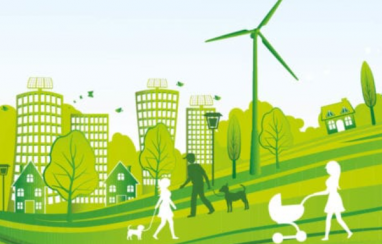- Air Jordan Release Dates 2023 , Drip Bar Detroit , AIR Spizike JORDAN
- The Global Destination For Modern Luxury
- nike sb varsity red dunks black and blue white
- adidas Samba Sizing: How Do They Fit? , adidas nebzed k eh2542 negras , IetpShops
- Nike LeBron Zoom Soldier VII (7) 'Deep Royal Blue' , Nike va t-il rééditer toutes les Air Force 1 B , IetpShops
- best nike basketball shoes
- Air Jordan 1 Mid Bred 554724 074 2020 Release Date 4
- air force 1 shadow
- air jordan xxxv cq4227 004
- nike air force 1 low white gold dc2181 100 release date info
- Home
- News and analysis
- Info hubs
- Events
- Video
- Case Studies
- About us
- Magazine
Produced for the industry by the Association for Consultancy and Engineering
Comment
Now is nature’s moment
As the Environmental Industries Commission (EIC) publishes its new Nature and Biodiversity Guide, Julia Baker, head of nature services at Mott MacDonald and chair of EIC’s Nature and Biodiversity Taskforce, explains why there has never been a more important time for nature on the infrastructure agenda.

When it comes to development the message is clear - “Now is nature’s moment.”
Those are the words of Julia Baker, head of nature services at Mott MacDonald and chair of the Environmental Industries Commission’s Nature and Diversity Taskforce.
“This is such an exciting time for our industry,” she said, “there’s a rise not just in nature policies, but clear drivers for development to enhance nature.
“We’re witnessing momentum building, with a historic shift as biodiversity gains prominence within development.”
In response to this evolving agenda, the EIC has published Nature and Biodiversity: A Guide to Development – offering valuable insights into best practices related to Biodiversity Net Gain and Natural Capital Accounting.
The brain-child of Robert Spencer, former chair of the taskforce, and senior director, sustainable legacies at AECOM, the guide is a collaboration between members with substantial contributions from peers at AECOM, AtkinsRealis, Cundall, Ecus, Jacobs, Landmark Information Group, Mott MacDonald, Poole & Co, Ramboll, Sanctus, Temple Group and WSP.
As the world increasingly recognises the critical role of nature in building climate resilience and promoting sustainability, the guide is set to become an essential resource for professionals navigating the intersection of development and environmental stewardship.
Biodiversity Net Gain (BNG) became mandatory in England in February. Major developments seeking planning permission must now deliver a BNG of 10%.
This means a development will result in more or a better-quality natural habitat than there was before development.
The guide explains this important piece of legislation and other relevant regulations in devolved governments to give greater clarity.
And with greater knowledge comes greater empowerment for project managers and developers to propel the balance between much needed infrastructure and thriving natural environments.
“Mandatory net gain is now live,” explains Baker, “we are not just watching history happen but are very much a part of it.”
With so much change, the Nature and Biodiversity Guide offers clear and well-informed advice to industry.
“Never before have we seen this momentum for nature, it’s exciting,” adds Baker. “But we are also very conscious people are at risk of being bombarded with too much information.
“We’ve worked to provide a simple go-to guide – what are the new regulations, how do they fit together and what do people need to do.
“We had so many people from the taskforce put their hands up to help, they wanted to give their time and dedication. We are all living and watching history – but we also want to be a part of history.”
The guide covers many considerations for project managers - legal requirements, practical approaches to implementing projects, encouraging a proactive mindset to Biodiversity Net Gain and connecting the dots with Natural Capital Accounting.
It also builds on and signposts to existing helpful resources to ensure industry champions best practice and shares knowledge and learning.
“The guide is aimed at non-nature professionals, project managers who will come across Biodiversity Net Gain,” explains Baker “It’s their guide to give them empowerment to make sure they can make informed decisions based on good practice.
“But it is also for biodiversity professionals to have an engagement tool and to point out examples.
“We are joining the dots between different nature concepts in a way that’s easy for project managers and setting that benchmark for good practice.”
She adds: “Undoubtedly this is a fast-moving space for nature. Policy is being written right now and things will evolve. But right here, right now the guide fills a gap, and it fills a need - and that’s really important.
“Mandatory BNG is very new and people are asking for help. Often it’s a case of ‘we’ve heard of it, but we don’t really know what it is’.
“When you have that, you have a window of opportunity to make sure the norm is good practice. It’s the most brilliant moment.”
There’s no doubt nature’s place in development is now critical.
“We have to find a way to have development and infrastructure that enhances and secures nature for the long-term.
“The question now is how do we build in a way that enhances nature – that has to be our starting point.
Not just a document, the Nature and Biodiversity Guide is a catalyst for change.
As project managers and developers embrace its principles, the sector will move closer to a future where development and nature coexist harmoniously, and communities can thrive.
“Legislation is having a positive impact, developers cannot start work until the biodiversity gain plan is approved, that is a massive change,” adds Baker.
“It’s such a powerful conversation for people to talk about biodiversity and nature in a way that’s meaningful – when you do that with purpose and intent we can build momentum and with momentum we can drive positive change.
“If the Nature and Biodiversity Guide is part of that - talking about what nature is and what is good practice - then we’re helping lead that positive change.”
Click here to read more about EIC's Nature and Biodiversity guide.






